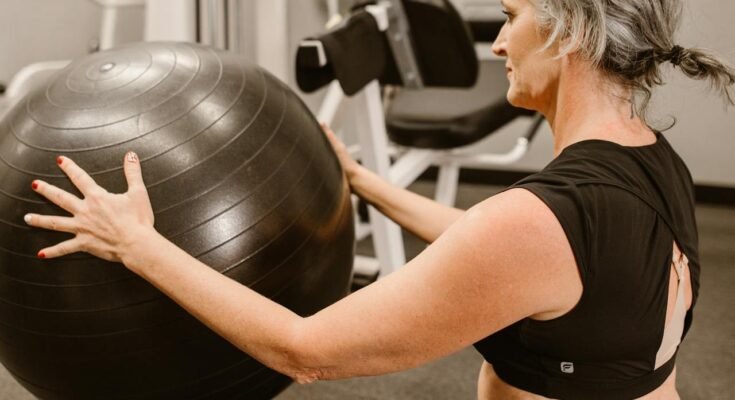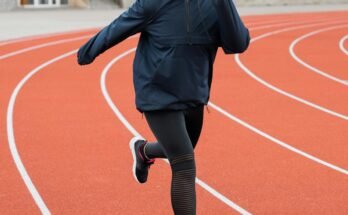Physical activity refers to any movement of muscles that requires energy. From walking and cycling to more demanding activities such as weightlifting and running, there are many kinds of physical activity. Having an active lifestyle by integrating regular physical activity into one’s daily routine can come with significant benefits for both physical and mental health. It is one of the best things you can do for your general welfare, prevent your body from inviting chronic diseases, and to live life to the fullest. Regularly exercise has its benefits and we will look at some of them here along with why physical activity is important for all ages.
Benefits of Physical Activity
- Improves Heart Health: One of the benefits of being active is a strong heart and effective blood circulation. Going hard on Cardio helps lower the risk of heart disease, lower blood pressure and increase lung capacity like running, swimming or cycling. Exercises can keep you fit from cholesterol levels and heart function.
- Improves Muscle and Bone Strength Activities Reports says that strength training, yoga, or resistance exercises helps you develop stronger muscles and bones. Exercises that are weight-bearing like walking or running provide a way to increase bone density and thus lower the chances of developing osteoporosis and fractures with age.
- Enhances Mental Health Physical exercise is important for mental health. It releases endorphins, which are often called “feel-good” hormones that help alleviate stress, anxiety and depression. Regular exercise has also been proven to help due to its ability to increase blood flow to the brain, resulting in better cognitive function, alleviate stress, and help sleep better, which is another natural way to counteract fatigue and mood disorders.
- Weight Management and Fat Loss Regular exercise helps in maintaining weight by helping burn calories and build muscle mass. If weight control is your goal, exercise should be a regular part of your life and combined with a healthful diet. It regulates metabolism and energy expenditure, encourages the usage of fat stores, and leads to favorable remodeling of body composition.
- Increased Immune Function Moderate-intensity exercise has been found to enhance immune functioning, allowing the body to fend off sickness more effectively. Regular exercise enhances circulation and immune cell function, allowing the body to identify and eliminate pathogens more effortlessly.
- Improves Flexibility And Coordination Stretching/ yoga, helps with flexibility, and prevents stiffness in the joints. Activities that require balance and coordination (such as dancing, Tai Chi, or Pilates) also help to increase body awareness and decrease risk of falls — especially in older adults.
- Enhances Longevity Numerous studies have demonstrated people who remain physically active are more likely to live longer and healthier. Frequent physical activity lowers the risk of chronic problems like diabetes, obesity and certain cancers. It is also associated with reduced risk of dying early and better quality of life as we grow older.
ypes of Physical Activity
There are four general types of physical activity:
- The aerobic (Endurance) activities: These activities increase heart rate and cardiovascular endurance. This can include running, swimming, cycling, dancing, or brisk walking.
- Strength Training (Resistance) Activities: Exercises that include weights or the use of resistance bands can assist in building muscle strength, tone, and endurance. This category includes exercises like weightlifting and bodyweight movements such as squats and push-ups.
- Activities that improve Flexibility and Balance: Yoga, Pilates and stretches, to keep joints mobile and maintain balance, which is critical as we get older.
- Sports and Recreation: Recreational sports such as tennis, basketball, and soccer can be healthy and can involve several types of physical activities at once.
How Much Activity Is Feasible for You?
For adults, the World Health Organization (WHO) recommends a minimum of 150 minutes of moderate-intensity aerobic activity or 75 minutes of vigorous-intensity aerobic activity per week. Adults should also do muscle-strengthening activities on two or more days a week. Personal goals, fitness level, and preferences will dictate adjustments to this.
And for kids and adolescents, at least 60 minutes of moderate- to vigorous-intensity physical activity each day. This should include activities that build muscles and bones, which include running, jumping and playing sports.
Barriers to Physical Activity
While the benefits of physical activity have been established, many struggle to find a way to work exercise into their routine. Common barriers include:
- Ability Constraints: flexibility in busy schedules can make it seem difficult to include exercise within daily routines. But even brief sessions of activity can be helpful. Finding ways to move — taking the stairs rather than the elevator; walking to work — can help break the “I don’t have time” mentality.
- Motivation and Habit: A best-selling winner can be hard to do on why in this task, the mom, can interrupt. Setting small, attainable goals and choosing activities people find fun can help make physical activity a habit. Also, working out with a friend or participating in a fitness group provides accountability and encouragement.
- Physical Impairments: Individuals with chronic illnesses, disabilities or injuries may find it hard to exercise. Thus, it cannot be stressed enough to consult a healthcare provider to formulate an exercise plan that is safe and also incorporates these limitations yielding overall health.
- Limited Access: Not everyone can afford a gym membership and may not have access to a sports facility. Fortunately, a lot of physical activities — walking, jogging, body weight exercises, and online workout programs — can be done at home or outside, with little to no equipment.
Conclusion
Exercise is an important part of a healthy lifestyle. Be it for cardiovascular health, muscle and bone strength, aiding in weight management, boosting mood, or increasing overall longevity, there are countless benefits to exercise on both body and mind. Establishing real habits takes time, however the choice to integrate a training session into your day to day life is a long-term move for better well-being and an important step to a more advantageous existence generally speaking. Everyone can access the power of physical activity — by making small changes and finding fun ways to be active.



